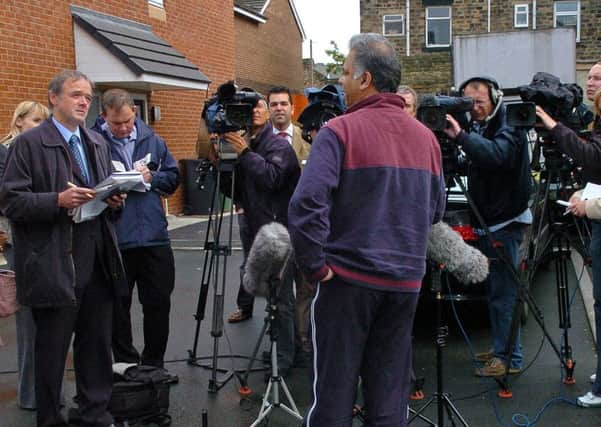7/7: When world’s spotlight fell on West Yorkshire


Then, on the morning of July 12, 2005, the answers started arriving and suddenly, the world’s media switched its attention from the UK’s traumatised capital to Leeds and the rest of West Yorkshire.
The Washington Post told how scores of police officers had carried out raids in what it described as “an ethnically mixed city of about 700,000 people about 200 miles north of the capital”.
Advertisement
Hide AdAdvertisement
Hide AdThe Times of India, meanwhile, described Leeds as a “fringe” city in the “Muslim and Pakistani-dominant region of West Yorkshire”. The New York Times did its best to pick out positives among the avalanche of bad news.
READ MORE...
Advertisement
Hide AdAdvertisement
Hide AdLeeds, it said, prided itself on its “ethnic diversity and relative peace”. Lauding the city’s reinvention in the 1990s as a business, retail and tourism trailblazer after the decline of its traditional industries, it went on: “While Leeds was not immune to racial tensions, most residents say the problems were well under control.”
Understandably, though, the journalists and film crews who descended on West Yorkshire a decade ago were less interested in the county’s back story and more on the men who had brought carnage to London, with reporters arriving from America, China, Australia and Europe.
Residents in Lees Holm, the road in the Thornhill Lees area of Dewsbury that had been home to plot ringleader Mohammad Sidique Khan, received repeated phone calls from Japanese media, desperate to elicit information about his up-to-then seemingly unremarkable life.
Italian journalists normally based in Rome turned up at The Yorkshire Post’s old offices in Wellington Street with the intention of pooling resources with our team.
Advertisement
Hide AdAdvertisement
Hide AdLike the rest of the country, the city had been on red alert in the days immediately following 7/7. Hundreds of people were evacuated from the area around Leeds bus station on July 10 after the discovery of a suspect package.
That high-profile presence was ramped up still further following the revelation of West Yorkshire’s unwanted role in the single worst terrorist atrocity on British soil.
Extra police patrols were mounted and Colin Cramphorn, the county’s then chief constable, urged the public to remain calm and reject any kind of extremist response in what he acknowledged was a “difficult and uncertain” situation.
Given the circumstances, it was little surprise that people were on edge. The day after the initial raids, firms including Union Industries in Hunslet raised the alarm when they were sent envelopes in the post containing white powder that turned out to be part of a misguided marketing campaign.
Advertisement
Hide AdAdvertisement
Hide AdA mediator who had worked in South Africa following the end of apartheid was at one stage called in by Leeds City Council amid concerns over possible tensions between Muslims and non-Muslims.
In the event, the calls for cool heads were heeded and the news crews slowly but surely drifted away, leaving behind only memories of some of the most unsettling and strange days ever witnessed in West Yorkshire.